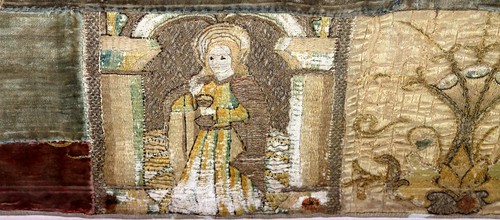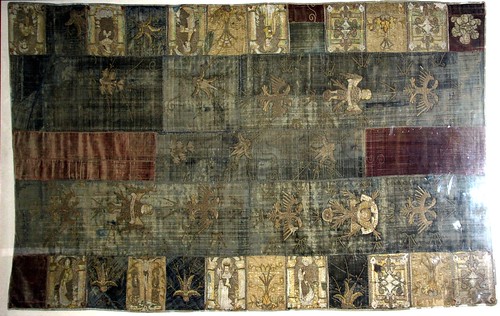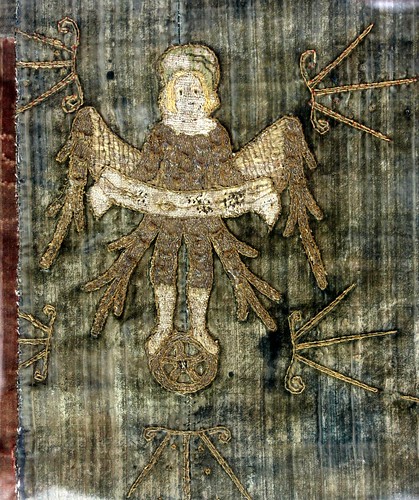The Lyng table carpet
One of the most tragic losses of the Reformation was undoubtedly the destruction of fine ecclesiastical textiles. Many thousands of vestments were confiscated and destroyed during the reign of Edward VI and many others were taken into private hands for safekeeping, in case the tide of religion changed once again. During the reign of Elizabeth I, when it became clear that the tide would not change again, many surviving pre-Reformation vestments were reused for other purposes. Some were cut up to make a parish pall to cover the coffin, but many were utilised to make a table carpet, the 'decent carpet of silk or other stuff' required by the Ornaments Rubric, that covered the top of the wooden communion table and hung down a few inches on either side. In Lyng in Norfolk is such a 'decent carpet', made from a patchwork of elements recycled from a number of late fifteenth century vestments. The cloth was in use in the church in 1678, when it was already described then as an 'ancient carpet'. Although exhibited briefly at the Burlington Fine Arts Club in 1905, it remained in use in the church until 1933. It is now housed in a glass case on the north wall.
The carpet is made up of elements taken from what appear to be at least three or even four distinct vestments. The material is made silk velvet, a common ground for medieval English embroidery. There are parts of a blue velvet cope powdered with two common and rather generic vestment motifs, angels and eagles. The angels are standing on wheels holding scrolls inscribed with the the text 'Da Gloriam Deo'.
There are the smaller remains of a second blue vestment, either a cope or more likely a chasuble decorated with embroidered 'water flowers', again a fairly generic motif in late medieval English embroidery. Then there are the smaller remains of a red velvet vestment, once decorated with scroll work. One of the fragments of this red velvet is decorated with a figure of the prophet Daniel emerging from a cloud.


Then there are the remains of cope orphreys, which are used to create a band of material at the top and bottom of the carpet, that would have overlapped the edge of the post-Reformation communion table. These orphrey fragments are such a mixed lot that they must be taken from at least three vestments. Some of the orphrey panels are decorated with stylised foliage forms, but there is some figurative work too. There is a crucifix, St Paul, St Olaf, St John the Evangelist, St James the Great and figures of prophets among the surviving panels. All worked in coloured silk on a linen ground, they would have been applied to the velvet vestments.


More photos here.
References. P. Hallett, Lyng Altar Cloth (Privately printed, 1986)
A. F. Kendrick, Exhibition of Embroidery Executed Prior to the Middle of the Sixteenth Century (London, 1905)


Comments